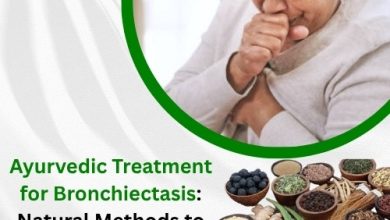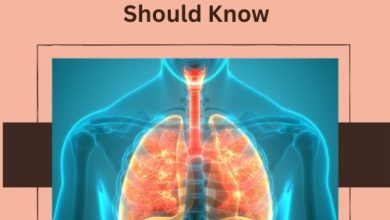Bronchiectasis: A Clearer Picture of Your Lung Condition

When you receive a diagnosis of bronchiectasis, many questions probably come to mind. You want to understand what this condition means for your daily life and how you can manage it effectively. Bronchiectasis is a chronic lung condition where the airways, called bronchi, become permanently widened and scarred. This damage makes it harder for your lungs to clear mucus, leading to a build-up that can cause frequent infections and inflammation.
Related Article: How to Manage Bronchiectasis Chest Pain: Natural Treatment Options
What Causes Bronchiectasis?
Several factors can lead to bronchiectasis. Often, it develops after a severe lung infection, such as pneumonia or whooping cough, which damages the airways. Other causes include:
- Severe infections: Repeated or severe respiratory infections can scar your airways.
- Cystic fibrosis: This genetic condition is a common cause of bronchiectasis in children and young adults.
- Immune system problems: Conditions that weaken your immune system can make you more susceptible to infections that damage the airways.
- Allergic bronchopulmonary aspergillosis (ABPA): This is an allergic reaction to a fungus that can inflame and damage the airways.
- Connective tissue diseases: Conditions like rheumatoid arthritis or Sjogren’s syndrome can sometimes affect the lungs.
- Foreign body aspiration: Accidentally inhaling an object can block an airway and lead to damage.
Related Article: 10 Powerful Bronchiectasis Remedies That Will Transform Your Breathing!
How Does Bronchiectasis Affect My Lungs?
Think of your airways as tubes that carry air to and from your lungs. In bronchiectasis, these tubes lose their elasticity and become baggy. This change means mucus, which normally traps dust and germs, struggles to move out of your lungs. Instead, it pools, creating a breeding ground for bacteria and leading to persistent coughs, breathlessness, and recurrent chest infections. Over time, these infections can further damage your airways, creating a cycle.
Recognising the Signs: What Symptoms Should I Look For?
The symptoms of bronchiectasis can vary in severity and may come and go. Common symptoms include:
- Persistent cough: This is often the most noticeable symptom, and you may cough up a lot of sputum (phlegm).
- Breathlessness: You might feel short of breath, especially during physical activity.
- Chest pain: This can occur due to coughing or inflammation.
- Wheezing: A whistling sound when you breathe.
- Fatigue: Feeling very tired.
- Recurrent chest infections: You might find yourself getting frequent bouts of bronchitis or pneumonia.
- Coughing up blood (haemoptysis): This is a less common but serious symptom that requires immediate medical attention.
Related Article: Managing Bronchiectasis: The Power of Herbal Supplement for Bronchiectasis
Diagnosing Bronchiectasis: What Tests Will I Have?
Your doctor will consider your symptoms and medical history. They will likely recommend a high-resolution computed tomography (HRCT) scan of your chest. This specialised X-ray provides detailed images of your lungs and can show the characteristic widening of the airways. Other tests might include:
- Sputum tests: To identify any bacteria or fungi causing infections.
- Lung function tests: To assess how well your lungs are working.
- Blood tests: To check for underlying conditions that might contribute to bronchiectasis.
Related Article: Foods to Avoid and Foods to Include in a Bronchiectasis Diet
Living with Bronchiectasis: Managing Your Condition
While there is no cure for bronchiectasis, you can effectively manage the condition and improve your quality of life. The main goals of treatment are to clear mucus from your lungs, prevent infections, and reduce inflammation.
- Airway clearance techniques: These are crucial for helping you remove mucus. Your physiotherapist can teach you techniques like percussion, postural drainage, and active cycle of breathing techniques (ACBT).
- Medications: Your doctor might prescribe antibiotics to treat infections, bronchodilators to open your airways, or mucolytics to thin your mucus.
- Pulmonary rehabilitation: This programme involves exercise, education, and support to help you manage your symptoms and improve your fitness.
- Vaccinations: Staying up-to-date with your flu and pneumonia vaccinations is vital to prevent severe infections.
- Lifestyle changes: Quitting smoking is one of the most important things you can do. Regular exercise and a healthy diet also play a significant role.
I often discuss with my patients how a holistic approach to health can benefit their overall well-being, especially when dealing with chronic conditions. “The Evolving Landscape of Holistic Health: Where Ancient Wisdom Meets Modern Science” explores the growing interest in natural approaches for chronic conditions. You might find yourself exploring various complementary therapies, including some Natural Remedies for Bronchiectasis. It is important to discuss any natural remedies you consider with your doctor to ensure they are safe and appropriate for your individual condition.
I also encourage you to think about “Boosting Your Respiratory Resilience: Beyond the Common Cold” because maintaining good general lung health, through exercise, nutrition, and avoiding environmental irritants, is a key part of managing bronchiectasis. Individuals with chronic respiratory conditions like bronchiectasis often seek ways to support their lung function naturally.
Furthermore, “Navigating Chronic Illness: Strategies for Empowerment and Well-being” offers valuable insights into coping mechanisms, self-care, and patient advocacy. Patients with bronchiectasis actively research and consider Natural Treatment for Bronchiectasis as part of their overall management plan, highlighting the need for informed decision-making and professional guidance.
Finally, you might be interested in “The Gut-Lung Axis: Unveiling the Hidden Connection to Respiratory Health.” When discussing interventions that benefit both, we consider how certain natural remedies are believed to support both gut and lung health, and how this might be relevant for conditions like bronchiectasis.
Related Article: Herbal Remedies for Bronchiectasis: Powerful Plants to Fight Symptoms
What Can I Do to Stay Well?
Taking an active role in your care is empowering. I recommend:
- Following your treatment plan: Stick to your prescribed medications and airway clearance techniques.
- Exercising regularly: Physical activity helps clear mucus and strengthens your lungs.
- Eating a balanced diet: Good nutrition supports your immune system.
- Staying hydrated: Drinking plenty of fluids helps thin mucus.
- Avoiding lung irritants: Steer clear of smoke, pollution, and harsh chemicals.
- Washing your hands frequently: This helps prevent infections.
- Getting enough rest: Rest supports your immune system.
- Connecting with others: Support groups can provide valuable emotional support and practical advice.
Remember, you are not alone. All Natural Organic Supplements provides best solutions for the cure of bronchiectasis. Work closely with your healthcare team to develop a management plan that suits your needs. With proper care and self-management, you can live a full and active life with bronchiectasis.




